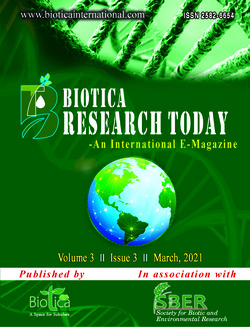
Major Diseases of Chickpea and Its Control Measures
Vinay Kumar Kardam*
Swami Keshwanand Rajasthan Agricultural University, Bikaner, Rajasthan (334 006), India
Dashrath Prasad
Swami Keshwanand Rajasthan Agricultural University, Bikaner, Rajasthan (334 006), India
DOI: NIL
Keywords: Bacteria, Fungi, Nematode, Virus
Abstract
Chickpea (Cicer arietinum L.) is one of the world’s most important cool season food crops mostly grown in dry lands. The crop suffers from serious diseases that affect it in all growth stages. The pathogens that affect chickpea include fungi, bacteria, viruses, nematodes and mycoplasma, which results in severe economic losses globally. Among these, fungi are the largest and perhaps most important group affecting roots, stems, leaves, flowers and pods of chickpea. These diseases viz., ascochyta blight, fusarium wilt, dry root rot, botrytis gray mold can causes grain yield and quality losses up to 100% so these diseases are important for manage.
Downloads
not found
Reference
Erwin, D.C., 1958. Fusarium lateritium and F. ciceri, incitant of Fusarium wilt of Cicer arietinum. Phytopathology 48, 498-501.
Kaiser, W.J., 1990. Host range of the ascochyta blight pathogen of chickpea. Phytopathology 80, 889-890. (Abs.).
